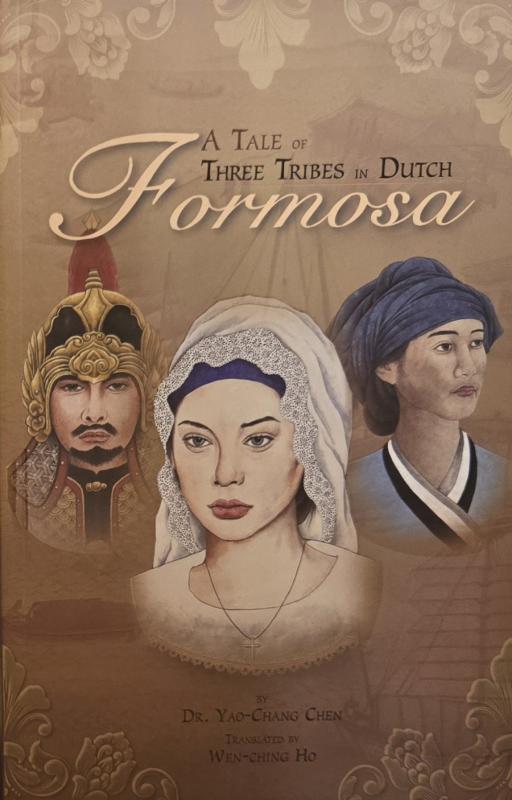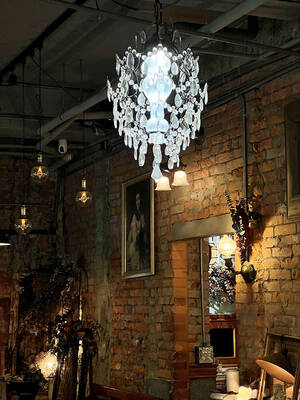The excellent historical novel by Chen Yao-Cheng (陳耀昌) is a gripping tale of Taiwan in the 17th century, called Formosa at the time, told from the perspective of characters representing the three major ethnic groups (the “tribes” mentioned in the title): the indigenous community, the Dutch and the Chinese.
Another element that makes this book stand out is the female perspective, as two of the main protagonists are Maria, the daughter of the Dutch missionary Hambroeck, and Uma, an Aboriginal woman with a strong character. The main Chinese character is Chen Ze, a man in charge of a merchant ship traveling all over Asia. They are all projected into the intense socio-political maelstrom of 17th century East Asia, with the fall of the Ming Dynasty and the impending war between the Dutch and the Ming loyalists under general Cheng Cheng-kung (鄭成功, also known as Koxinga) on Taiwan.
However, this is a book about life in Formosa and how people from different ethnicities try to deal with their identity and shifting loyalties in the lively international environment of southern Taiwan in the 17th century.

HISTORICAL CONTEXT
Although a fictional account, A Tale of Three Tribes in Dutch Formosa has made a successful effort to place personal stories into an historical context. The original historical sources were mainly Dutch in origin and strongly focused on trade.
The later Chinese sources were focused on their own exploits and Taiwan after the Chinese invasion by Koxinga in 1661. The stories of the indigenous population and their many communities have little or no role to play in the majority of the historical sources.
Chen, a medical doctor, has made great efforts in studying early Taiwanese history from the earliest sources. His wide knowledge is reflected in the book with an in-depth historical background. The many people and place names might be a little difficult to grasp in the beginning for the uninitiated reader.
However the plot is clear and the reader easily enters into the flow of the story and the lives of the main characters (the excellent translation was made by Ho Wen-ching and edited by Ian Maxwell).
ARTISTIC TREATMENT
Recent publications on 17th century Taiwanese history by different authors, like Lord of Formosa by Dutch author Joyce Bergvelt, as well as the soon to be released movie Taiwan Triology by director Wei Te-sheng (魏德聖), all provide a multi-layered view of Taiwanese history in the 17th century, away from the traditional interpretation of history.
In all these new works the authors and film makers try to capture the individual stories of men, women and children as pawns in the chess game of history, without judging them. This is a pleasant change from earlier nationalistic accounts of history. A Tale of Three Tribes in Dutch Formosa is a welcome addition to this view of history. It is refreshing to see both Aborigines and women in general given their much needed voice in history. This is an ideal book for anyone interested in the vibrant 17th century Taiwanese society and how people with different backgrounds had to live together on this small island and individual stories full of intrigue, romance and armed confrontation.
Robin Ruizendaal is Sinologist and researcher living in Taipei who was a recipient of the 2024 Taipei Culture Award.

Oct. 27 to Nov. 2 Over a breakfast of soymilk and fried dough costing less than NT$400, seven officials and engineers agreed on a NT$400 million plan — unaware that it would mark the beginning of Taiwan’s semiconductor empire. It was a cold February morning in 1974. Gathered at the unassuming shop were Economics minister Sun Yun-hsuan (孫運璿), director-general of Transportation and Communications Kao Yu-shu (高玉樹), Industrial Technology Research Institute (ITRI) president Wang Chao-chen (王兆振), Telecommunications Laboratories director Kang Pao-huang (康寶煌), Executive Yuan secretary-general Fei Hua (費驊), director-general of Telecommunications Fang Hsien-chi (方賢齊) and Radio Corporation of America (RCA) Laboratories director Pan
The consensus on the Chinese Nationalist Party (KMT) chair race is that Cheng Li-wun (鄭麗文) ran a populist, ideological back-to-basics campaign and soundly defeated former Taipei mayor Hau Lung-bin (郝龍斌), the candidate backed by the big institutional players. Cheng tapped into a wave of popular enthusiasm within the KMT, while the institutional players’ get-out-the-vote abilities fell flat, suggesting their power has weakened significantly. Yet, a closer look at the race paints a more complicated picture, raising questions about some analysts’ conclusions, including my own. TURNOUT Here is a surprising statistic: Turnout was 130,678, or 39.46 percent of the 331,145 eligible party

The classic warmth of a good old-fashioned izakaya beckons you in, all cozy nooks and dark wood finishes, as tables order a third round and waiters sling tapas-sized bites and assorted — sometimes unidentifiable — skewered meats. But there’s a romantic hush about this Ximending (西門町) hotspot, with cocktails savored, plating elegant and never rushed and daters and diners lit by candlelight and chandelier. Each chair is mismatched and the assorted tables appear to be the fanciest picks from a nearby flea market. A naked sewing mannequin stands in a dimly lit corner, adorned with antique mirrors and draped foliage

The election of Cheng Li-wun (鄭麗文) as chair of the Chinese Nationalist Party (KMT) marked a triumphant return of pride in the “Chinese” in the party name. Cheng wants Taiwanese to be proud to call themselves Chinese again. The unambiguous winner was a return to the KMT ideology that formed in the early 2000s under then chairman Lien Chan (連戰) and president Ma Ying-jeou (馬英九) put into practice as far as he could, until ultimately thwarted by hundreds of thousands of protestors thronging the streets in what became known as the Sunflower movement in 2014. Cheng is an unambiguous Chinese ethnonationalist,